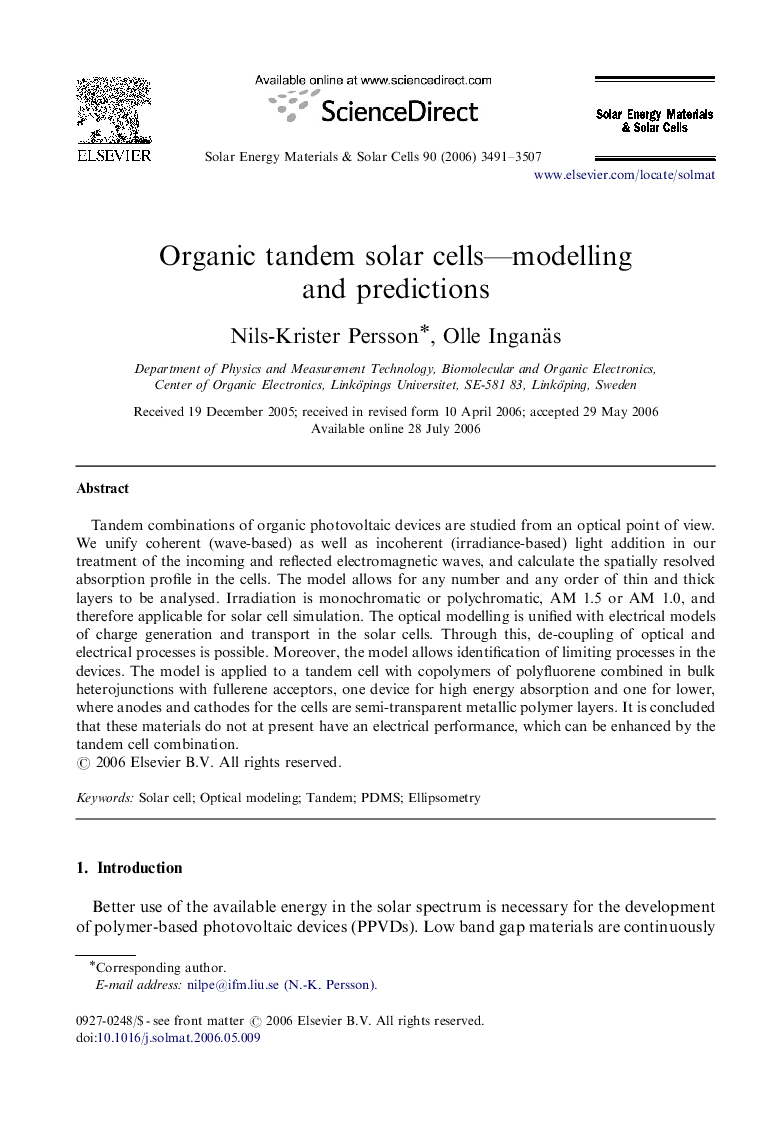| Article ID | Journal | Published Year | Pages | File Type |
|---|---|---|---|---|
| 80836 | Solar Energy Materials and Solar Cells | 2006 | 17 Pages |
Tandem combinations of organic photovoltaic devices are studied from an optical point of view. We unify coherent (wave-based) as well as incoherent (irradiance-based) light addition in our treatment of the incoming and reflected electromagnetic waves, and calculate the spatially resolved absorption profile in the cells. The model allows for any number and any order of thin and thick layers to be analysed. Irradiation is monochromatic or polychromatic, AM 1.5 or AM 1.0, and therefore applicable for solar cell simulation. The optical modelling is unified with electrical models of charge generation and transport in the solar cells. Through this, de-coupling of optical and electrical processes is possible. Moreover, the model allows identification of limiting processes in the devices. The model is applied to a tandem cell with copolymers of polyfluorene combined in bulk heterojunctions with fullerene acceptors, one device for high energy absorption and one for lower, where anodes and cathodes for the cells are semi-transparent metallic polymer layers. It is concluded that these materials do not at present have an electrical performance, which can be enhanced by the tandem cell combination.
